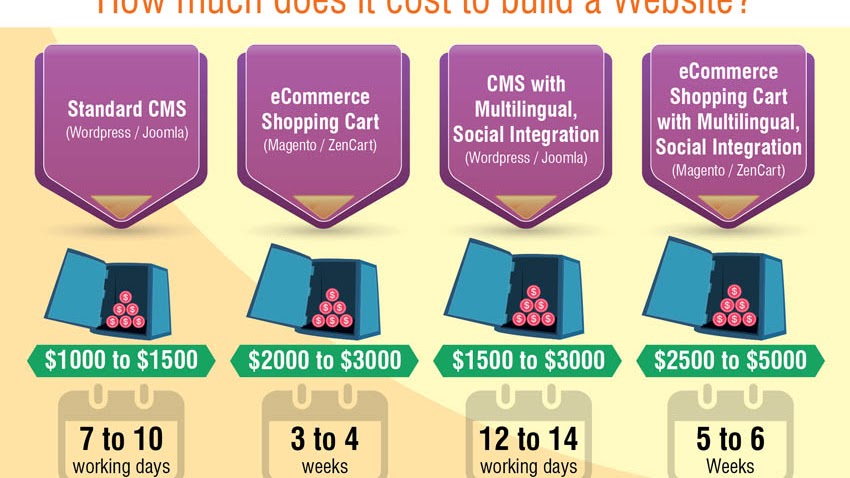That’s a bold headline, especially if you are a retired enlisted military member only bringing in a little over a thousand dollars a month in retirement pay. But it’s true. Military retirement is worth well over a million bucks. In some cases, it is worth millions of dollars.
Before we get too deep into this, I want to define what I am talking about. I’m talking about two factors – the long-term value regarding how much you will receive in a direct pension over the lifetime of your retirement benefits and the value of the retirement benefits, including healthcare coverage and other benefits. Combined, these benefits are easily worth over a million dollars, even if you don’t have the spending power of a million dollars right now.
Take an example of retirement pay for an average military career. Since military members are eligible for retirement benefits at 20 years, we will use a reasonable rank and service time for our examples.
It is reasonable to assume that the average enlisted member will be able to retire at 20 years, having achieved the rank of E-7, and the average officer should be able to retire at 20 years at the rank of O-5.
Of course, there will be outliers based on when you served, your career field, and other factors, but these ranks and service times should apply to the majority of careers (if anything, I am aiming at the conservative side because many people choose to serve longer than the 20-year mark, earning an extra 2.5%-3.5% on their retirement pay per additional service year, depending on whether they take the high 36 retirement plan or the Redux retirement plan).
Track your TSP and other investments with Personal Capital’s free financial dashboard
As we mentioned, we will look at a military retiree with 20 years of service at the ranks of E-7 for enlisted and O-5 for officers. The base pay for these ranks in 2009 is:
 46
46Most retirees under the High-36 Plan will receive 50% of their base pay at 20 years, which would equal the following amounts:
Those under the BRS would receive 40% of their base pay at 20 years (2% per year of service), which would be the following amounts:
The next factor to consider is that military retirement pay will be there day in and day out. There are few places in the world that someone can receive a lifetime pension starting at or around age 40. Many military retirees will receive a monthly cash payment for over 40 years. When you add in the cost of living and inflation adjustments, we’re talking about some serious cash!
There are few places in the world that someone can receive a lifetime pension starting at or around age 40. Many military retirees will receive a monthly cash payment for over 40 years. When you add in the cost of living and inflation adjustments, we’re talking about some serious cash!
Using the numbers above from a recently retired E-7 or O-5, we get the following lifetime payments (note: these military retirement pay numbers are not adjusted for inflation and do not include any COLA increases; this is not a planning tool, but for illustration purposes only. Your specific retirement benefits will vary based on your situation):
 40
40Even without COLA or other inflation adjustments, we can see that we are reaching some serious numbers. Each additional year you serve before you retire can add another 2.5% to your monthly and annual pay, and each higher pay grade you achieve can add hundreds or even thousands of dollars per year. As previously mentioned, the numbers used in this article are meant to be a conservative estimate.
<a href=”https://personalcapital. sjv.io/c/2958094/1199045/13439?u=https%3A%2F%2Fwww.personalcapital.com%2F”>Visit PersonalCapital.com</a>
sjv.io/c/2958094/1199045/13439?u=https%3A%2F%2Fwww.personalcapital.com%2F”>Visit PersonalCapital.com</a>
OK, there is a minimal TriCare payment, but compared to what civilians pay, it is basically a non-issue. Benefits for retired military members are also guaranteed – they won’t drop you after you have required expensive procedures or for pre-existing conditions. Guaranteed medical coverage is a massive blessing in today’s American society. Here is a little more information about the kinds of insurance available to civilians: comparing individual and group health insurance. Hopefully, that will help you better understand the value of military retiree medical benefits!
Military-sponsored medical benefits are incredibly valuable, especially as you get older and when they cover your spouse. There are very few civilian plans that are similar to this. Most people spend several thousand dollars per year for basic medical coverage, which doesn’t include out-of-pocket expenses for doctor visits, medical procedures, prescription medication, or other associated costs.
It would not be unreasonable to place a value of $15,000-$20,000 per year on military retiree medical benefits, even for a healthy individual. Add a spouse to the benefits, guaranteed coverage, and little to no out-of-pocket expenses for complex medical procedures. Other factors and the medical benefits alone can be worth hundreds of thousands of dollars or more throughout a lifetime (and sometimes into the millions of dollars for people who receive complex medical care over a long-term period).
I won’t even try to assign a value to these benefits because they don’t apply to all military retirees equally. Some people may practically live on base, visiting the base clubs, shopping at the exchanges, using the gyms, auto hobby shops, etc., and others may not live near a base. They may not be able to take advantage of any of these benefits. So this category falls in the “good deal if you can get it” benefit but is not a core part of the equation. But it is worth mentioning because many retirees save a lot of money each year by shopping on base.
But it is worth mentioning because many retirees save a lot of money each year by shopping on base.
One challenge to the analysis is that the military pension includes a cost of living adjustment, so the amount of the income stream has to rise every year by the rate of inflation.
Another problem is that no one knows how long the pensioner will live, so it’s difficult to predict how long the pension will be paid out.
Finally, the calculated lump sum must be invested in a safe and stable asset to ensure it survives for decades. Unfortunately, the safe and stable assets have a very low yield, so it takes a larger lump sum to produce an income stream big enough to pay the pension.
The answer to these puzzles involves the mathematical process of “discounting”.
Accountants and actuaries devote their entire careers to studying asset yields, human longevity, and other risks. They calculate the statistical probability that a specific lump sum can pay a particular pension for the necessary number of years.
The good news for pension recipients is that the calculations are much more accurate when the analysis is simultaneously applied to hundreds of thousands of pensions as a group. Even better, the Department of Defense can rely on the number-crunching skills of another giant bureaucracy of inflation-adjusted payments: Social Security.
The mathematical details of discounting an inflation-adjusted annuity are well beyond the scope of this post. There’s not an easy formula to convert that $100/day pension to a precise lump sum. However, a few more straightforward estimates are reasonably close to the more complicated methods.
The easiest estimate assumes that a military pension keeps up with inflation. This eliminates the more complicated factors of correcting future dollars for inflation. If a military pension keeps up with inflation then the pension’s value in today’s dollars stays constant. The lump-sum value of the pension is the total amount to be received during the rest of the veteran’s life:
A 38-year-old veteran receiving $3000/month with a COLA might reasonably look forward to 35 more years of life. The estimate of the present value of their pension would be
The estimate of the present value of their pension would be
The life-expectancy estimate ignores other discounting factors in favor of simplicity and speed. Its main advantage is that veterans can quickly estimate a lump sum for their expected lifespan. Veterans in good health with long-lived ancestors may decide that they have 40 or even 50 years of retirement, raising the current value of their pension.
Another quick estimate is to assume that the pension is the income stream from a lump sum of Treasury Inflation-Protected Securities (TIPS). TIPS are an extremely safe and stable asset with built-in inflation protection. The market for buying and selling TIPS is huge and liquid, so their prices are reasonably accurate.
One flaw of this estimate is that, unlike a military pension, when the pensioner dies, there’s still a lump sum of TIPS generating a stream of income. Another drawback is that a TIPS’ maturity (now a maximum of 30 years) is usually less than the pensioner’s remaining life expectancy.
Another drawback is that a TIPS’ maturity (now a maximum of 30 years) is usually less than the pensioner’s remaining life expectancy.
The advantage of this estimate is simplicity and speed:
A January 2009 Treasury auction sold 20-year TIPS at an inflation-adjusted annual percentage yield of 2.5%. So for that $3000/month pension,
Another estimate of the lump-sum value of an inflation-adjusted pension is a commercial annuity. The annuity market is generally regarded as liquid because insurance companies compete to offer the “best” price without losing money. However, they still charge more than the actual value of the annuity to make their profit.
Insurance companies could be unable to make annuity payments or even go bankrupt and should be considered a riskier source of annuity payments than TIPS or other government bonds.
One of the “less risky” annuities comes from an agency sponsored by the federal government– the Thrift Savings Plan. TSP annuities are purchased from an insurance company. The federal government does not guarantee them, but the insurance company is presumably charging a smaller fee (to sell a large volume of annuities), and the annuity’s cost would be closer to its value.
TSP annuities are priced monthly and do not offer complete protection against inflation. The advantage of estimating a pension’s lump-sum value from a TSP annuity is its lower price and the TSP website’s calculator. Assuming that the $3000/month pension is paid to a 38-year-old veteran and limited to 3% annual inflation:
$1.4 million is the price that a veteran would pay in the market to buy a TIPS portfolio or an annuity that would yield their inflation-adjusted pension of $3000/month for the rest of their life. Other research analyzes the theoretical cost of annuities and discounted values– only the cost and not its market price. (This includes a research paper on military pensions– the citation is in the book.)
Other research analyzes the theoretical cost of annuities and discounted values– only the cost and not its market price. (This includes a research paper on military pensions– the citation is in the book.)
These estimates range from about $1 million to $1.2 million. They’re only theoretical estimates. These annuities can’t actually be purchased like the assets of the other estimates, but they’re a more conservative estimate of the probabilities of longevity and other risk factors.
Let’s get back to the veteran who’s just finished 10 years of service and is wondering if it’s worth staying in the military for another decade. After analyzing the pension’s present value, which sounds more compelling now: $100/day, or lifetime income of over $1 million?
Thousands of dollars coming in regularly quickly add up over the years. Add in increases for inflation, essentially free health care, and other benefits, and you can see how a military retirement can quickly be worth millions of dollars over a lifetime.
I didn’t stay in long enough to qualify for military retirement benefits – I separated from the USAF with an Honorable discharge after 6.5 years of service. Part of me looks at the military retirement system with a bit of longing. It is an excellent system for those who qualify, and I would love to be able to receive military retirement benefits for the rest of my life. However, separating from the military was the best move for me at the time, and I have no regrets regarding my separation or my military service. I am proud to have served, and the military is a large part of who I am today.
*disclaimer about this article: The calculations are for illustrative purposes only and do not reflect the exact retirement benefits you will receive. This is a simplified look at military retirement benefits and does not take many factors into consideration, including taxes, disability benefits, inflation, COLA, and other factors.
Ryan Guina is The Military Wallet’s founder. He is a writer, small business owner, and entrepreneur. He served over six years on active duty in the USAF and is a current member of the Illinois Air National Guard.
He is a writer, small business owner, and entrepreneur. He served over six years on active duty in the USAF and is a current member of the Illinois Air National Guard.
Ryan started The Military Wallet in 2007 after separating from active duty military service and has been writing about financial, small business, and military benefits topics since then. He also writes about personal finance and investing at Cash Money Life.
Ryan uses Personal Capital to track and manage his finances. Personal Capital is a free software program that allows him to track his net worth, balance his investment portfolio, track his income and expenses, and much more. You can open a free Personal Capital account here.
Featured In: Ryan’s writing has been featured in the following publications: Forbes, Military.com, US News & World Report, Yahoo Finance, Reserve & National Guard Magazine (print and online editions), Military Influencer Magazine, Cash Money Life, The Military Guide, USAA, Go Banking Rates, and many other publications.
See author's posts
Military retirement pay is one of the top three benefits of military service along with medical and other benefits. Also, all military retirements are protected from inflation by annual Cost of Living Adjustments (COLAs), based on changes in the Consumer Price Index (CPI) as measured by the Department of Labor.
A military retirement plan could be considered one of the best retirement plans around. There are a few options depending on when you began your service. Know your options and how to calculate your military retirement pay to find out which option is best for you.
If you began your military service before Sep. 7, 1980, you’re eligible for the Final Pay Retirement system. Your retired pay is calculated by multiplying your final base pay by 2.5% for every year of service.
If your military service began between Sep. 8, 1980, and July 31, 1986, you are eligible for the High 36 Retirement System. High 36 is very similar to the Final Pay Retirement System except your retired pay is calculated using an average of the three highest paid years of service.
If your military service began between Aug. 1, 1986, and Dec. 31, 2017, you qualify for REDUX Retirement System or the High 36 System. This system is based on your highest 36 months base pay. After your 15 year service anniversary you will receive a Career Status Bonus (CSB) and your retirement pay is reduced. If you have 30 years or more of service, there is no pay reduction.
If you began your military service after Jan. 1, 2018, you are eligible for the Blended Retirement System (BRS). With BRS, you will receive 40% of your base pay after 20 years and a bonus at 12 years, which is 2.5% of your annual base pay. The military will contribute 1% of your base pay to your Thrift Savings Plan (TSP).
If you are determined to be medically unfit for service with a DoD disability rating of at least 30%, you are eligible for disability pay. This is calculated using percentage of disability or years of credible service.
There are two ways of calculating your military retired pay base, the final pay method and the high 36 method. The final pay method sets the retired base pay equal to the final basic pay. The high 36 method is the average of your highest 36 months of basic pay. The date you began your military service will determine which method is used to calculate your retired pay base.
For the Final Pay and High 36 retirement plans each year of service is 2.5% to your retirement multiplier. Depending on the type of service, active duty or reserve, your years of creditable service will be calculated differently.
If you qualify for the REDUX retirement plan, your multiplier is reduced for each year less than 30 years of service at retirement.
The disability retirement multiplier will be the highest of the assigned disability percentage at retirement not exceeding 75% or by the applicable retirement plan multiplier and years of service.
| Years of Service | 20 | 21 | 22 | 23 | 24 | 25 | 30 | 35 | 40 | 41 |
| Final Pay | 50% | 52.5% | 55% | 57.5% | 60% | 62.5% | 75% | 87.5% | 100% | 102.5% |
| High-36 | 50% | 52. | 55% | 57.5% | 60% | 62.5% | 75% | 87.5% | 100% | 102.5% |
| REDUX | 40% | 43.5% | 47% | 50.5% | 54% | 57.5% | 75% | 87.5% | 100% | 102.5% |
| BRS | 40% | 42% | 44% | 46% | 48% | 50% | 60% | 70% | 80% | 82% |
All military retirement plans include an annual Cost of Living Adjust (COLA). Each retirement plan adjustment is based on changes with the Consumer Price Index. For the Final Pay, High 36, Disability, and BRS retirement plans, the yearly cost of living adjustment is equal to the percentage increase of the CPI.
Each retirement plan adjustment is based on changes with the Consumer Price Index. For the Final Pay, High 36, Disability, and BRS retirement plans, the yearly cost of living adjustment is equal to the percentage increase of the CPI.
For the REDUX retirement plan the COLA is about one percentage point less than the other retirement plans. If you have the REDUX plan you’ll be given a on time adjustment at 62 years of age to make up the difference in COLA to equal what it would have been for High 36. The COLA will then revert to the previous percentage.
The Blended Retirement System Explained
Should you switch to the new Blended Retirement System? We have the details to help you decide.
Guard And Reserve Retirement
National Guard & Reserve members who complete a minimum 20 qualifying years of service become eligible for retired pay at age. ..
..
Thrift Savings Plan Overview
The Thrift Savings Plan (TSP) offers service members flexibility in investment planning.
Concurrent Retirement and Disability Pay (CRDP) Overview
Concurrent Receipt of Disability Pay lets you get military retirement pay and VA disability compensation at the same time.
Keeping Retiree Pay Records Up-to-Date
It's important that all retirees periodically review their military retirement pay to ensure all information is up-to-date.
Military Retirement Paychecks
Retirees residing in the United States can have their paychecks sent by EFT to a financial institution.
Retired Military Pay Days for 2023
Military retiree and annuitant payday is always on the first business day of the month.
Retired Pay Allotments
Retired servicemembers are permitted to continue some allotments that they had in effect while on active duty.
Many citizens of Russia, Ukraine and Belarus, moving to permanent residence in the EU countries, sooner or later become interested in the question of how much they pay pensioners in Europe. The minimum pension in almost all economically developed countries of the Old World will be incomparably and disproportionately higher. However, each case has its own requirements and conditions that should be taken into account, as well as the main trends that have been clearly visible in recent years.
In a number of states, pension reform is planned for the near future or is already underway, which is due to such factors as the continuing aging of the population, falling birth rates, rising unemployment and a decrease in social insurance contributions. It is these contributions, as well as the length of service and the level of salary, that determine the amount of the pension that a citizen / resident of a particular country will receive. There are other types of pensions - in particular, for disability, loss of a breadwinner, widowhood and other reasons, but they are received by a rather limited contingent.
It is these contributions, as well as the length of service and the level of salary, that determine the amount of the pension that a citizen / resident of a particular country will receive. There are other types of pensions - in particular, for disability, loss of a breadwinner, widowhood and other reasons, but they are received by a rather limited contingent.
In order to count on the minimum pension in Spain, which is set at 9,081.8 euros per year from 2020 - 14 payments of 648.7 euros, you must officially work for at least 15 years and, accordingly, be registered in the social security system (Seguridad social). At the same time, two years of this period must necessarily fall on the 15-year period preceding retirement. This usually happens at 65-66 years old, but it is planned that this bar will be gradually raised to 67 years old - for both men and women. As of March 2020, the average pension in Spain was 1008 euros per month, and to this we must add a rather impressive set of benefits: discounts on purchases in shopping centers and supermarkets, medicines and medical care, education and entertainment, as well as holidays within State program "Social tourism for the elderly".
In Spain's neighboring country in the Iberian Peninsula, pensioners receive an average of about 540 euros, which, given the lower prices for essential goods and services, is quite an acceptable amount. However, to obtain it, you need to have an official work experience of over 30 years, and you can go on a well-deserved rest at the age of 66 years and 5 months. The minimum labor pension in Portugal is 282.26 euros, and it is due to those who have worked for at least 15 years. For everyone else, including foreigners who have lived here legally for more than seven years, the so-called. "social pension" - about 210 euros per month, which is only enough to make ends meet.
Starting from 2012, a pension reform has been carried out in Italy, which implies a gradual increase in the retirement age. According to this plan, in 2021 it will be the same for everyone, regardless of the form of employment (employed in the private / public sector or self-employed / business owners) - 67 years and 2 months. Of these, the minimum length of service must be 38 years, the period for paying insurance premiums is 18 years, and early retirement is possible if the length of service exceeds 42 years for women and 43 years for men. The Italian minimum wage is 687 euros per month, but with a number of additional payments, it usually exceeds 750 euros. The average pension in Italy fluctuates around 1,200 euros per month, but it varies quite noticeably depending on the region.
Of these, the minimum length of service must be 38 years, the period for paying insurance premiums is 18 years, and early retirement is possible if the length of service exceeds 42 years for women and 43 years for men. The Italian minimum wage is 687 euros per month, but with a number of additional payments, it usually exceeds 750 euros. The average pension in Italy fluctuates around 1,200 euros per month, but it varies quite noticeably depending on the region.
The French pension system differs from most European countries in its two-tier structure (basic and funded components), which is determined by seniority - at least 41 years and 6 months and the number of accumulated points, based on salary and insurance contributions. In order for the final amount to be more than the calculated one, there are many programs addressed to employees in certain areas, civil servants, entrepreneurs, self-employed, etc. If all the necessary conditions are met and upon reaching the age of 67, French residents will receive a labor pension of 903 euros per month, and for the rest, the so-called "solidarity" is provided - 800 euros. The average pension in the country exceeds 1,500 euros per month, which allows you to lead a decent life.
The average pension in the country exceeds 1,500 euros per month, which allows you to lead a decent life.
In Germany, the pension system is even more complex than in France, and several factors influence the size of the pension. These are gender (men receive noticeably more), age of final termination of employment (so far set at 65 years), pension contributions and their continuity (ideally 45 years), calculated accumulated points, place of residence and the economic situation in the country as a whole. There is no such term as "minimum pension" in Germany; instead, there is a "basic social benefit", which is assigned to those who could not earn a pension above the subsistence level: 416 euros for singles and 374 euros for those with a spouse. Separately, the state pays for the maintenance of housing and partially assumes other vital expenses. Officially, the average pension in Germany is a little over 1,250 euros per month, but in reality this figure barely reaches one thousand euros.